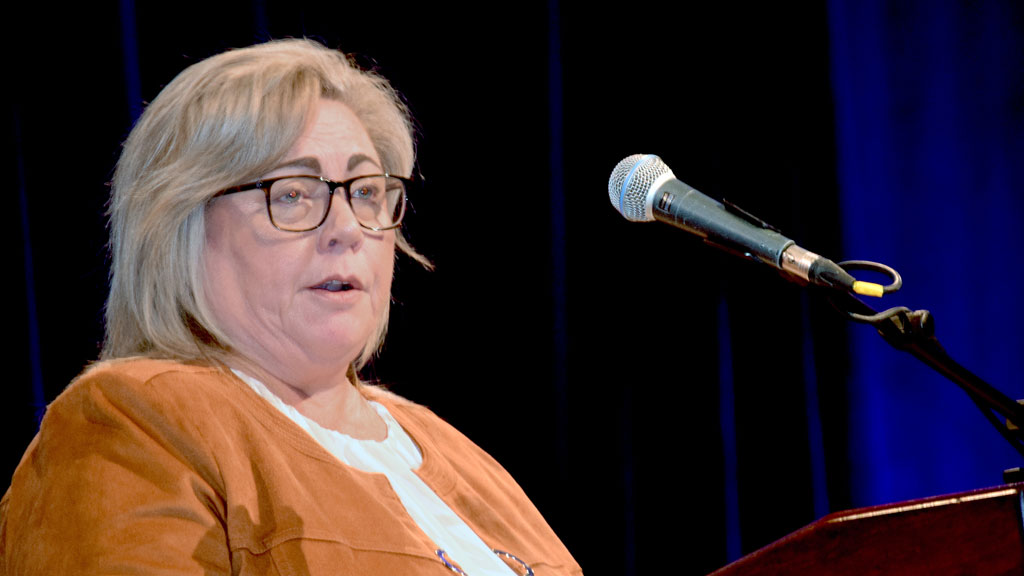There are major expectations for Skilled Trades Ontario to deliver the construction workforce Ontario needs after the lost years of the Ontario College of Trades.
And as the crown agency prepares to head into its third year, when it will finally get ahold of all of the administrative tools that STO CEO and registrar Melissa Young says it needs to succeed, Young believes STO is poised to deliver.
“I feel like we’re just scratching the surface right now,” she said. “There’s a lot of work to be done.”
The Building Opportunities in the Skilled Trades Act, which created STO to replace the College of Trades, provided for two phases of administrative transfers of responsibilities from the Ministry of Labour, Immigration, Training and Skills Development as STO built up its operations.
Young, who has had success setting up similar agencies in five other jurisdictions during her 32-year career, said she is in touch with the ministry daily as they discuss the third year of the hand-over.
Young said she is eager to take hold of at least three essential responsibilities to enable STO to find its rhythm.
The tools are the ability to register training agreements to put new registrants on the pathway into apprenticeship, issuing certificates of apprenticeship, and administering and certifying exams.
Those items will “make us a full mature state and fully operational for everything apprenticeship related,” said Young.
“We’re at now the state where it’s a really good spot to be. Those are expected to come over to us very shortly.”
The first two breakthroughs Young expects to see once the agency is handed full control of the reins is a large increase in exam pass rates and many more registrated training agreements.
When Young presented details of STO’s new strategic plan to the Ontario Building Trades conference in October, she said there were 91,634 active apprentices in Ontario and 48,766 registered apprentices in the building trades.
While she waits to obtain those new responsibilities, Young said, STO has found workaround strategies to address Ontario’s dismal exam passing rate.
“It’s unfortunately the lowest pass rate in Canada. So we’re working really hard to find ways to eliminate that issue and bring us up to par with the rest of the country,” she said.
It’s difficult, though, when STO does not own the exam administration and the training agreement pathways.
Young said STO currently only intersects with apprentices when they fail an exam. One strategy is exam support — one student at a time.
“We’re reaching out to them individually now and helping them navigate through and see what the issues are, taking a look at their exam breakdown.”
Young said the decision by the Doug Ford government and then-Minister of Labour Monte McNaughton to retain controversial responsibilities such as scopes of practice, compliance and enforcement within the ministry was clearly the right way to go.
“We don’t get into this jurisdictional rubbish. I know how important it is, I used to be a union rep, but I’ve never felt that apprenticeship should be any part of that.”
The College of Trades had multiple layers of trade boards, sector boards and other inefficient processes that made for cumbersome policy-making, Young said.
“We had a lot of fat in the decision-making process and it was deeply politicized. Quite frankly, politics has no place in education and training.
“We haven’t had any issues at all since I’ve been here. Stakeholders are singing from the same songbook.”
Successes during the first two years as enumerated by Young have included bringing services online in partnership with the ministry, including a digital portal, digital logbooks and a public register; work towards harmonizing Red Seal trades; showing national leadership by providing experts to develop Red Seal occupational standards; partnering with the ministry to host provincewide career fairs; and launching the three-year strategic plan.
Young said upgrading Red Seal standards is an important step and will help the passing rate as apprentices become “zoomed in.”
Two years ago, Young said, Ontario was lacking in innovation in the trades because the province was not participating in the new Red Seal occupational standard process.
The strategic plan includes pledges to pursue innovation in the apprenticeship and certification model, boost research including establishing benchmarks to measure progress, and promote the skilled trades.
In the near term STO will survey stakeholders to determine frustrations and pain points, Young said, and there will be a large promotional campaign launching next year.
Follow the author on Twitter @DonWall_DCN



When trying to speed up and increase the number of apprentices, keep in mind, that safety is number one. You speak of unions, safety is always number one with them, and they always give their members a top notch education in safety.